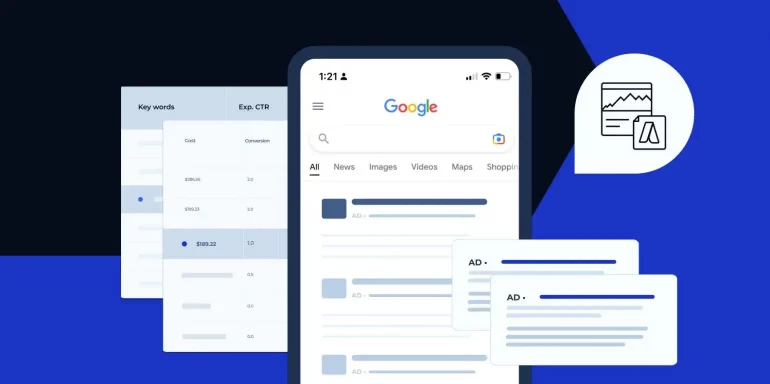If your SEO efforts aren’t paying off — or paying off fast enough — consider adding search engine advertising to build your brand and customer base faster. While SEO takes time, search engine marketing (SEM) allows you to save time and automatically appear in front of target audiences actively searching for products and services like yours.
What is search engine advertising?
Search engine advertising (also known as search advertising, Internet search advertising, or online search advertising) allows you to directly display your paid ads among the search results on various search engines, like Google, Bing, and Yahoo:
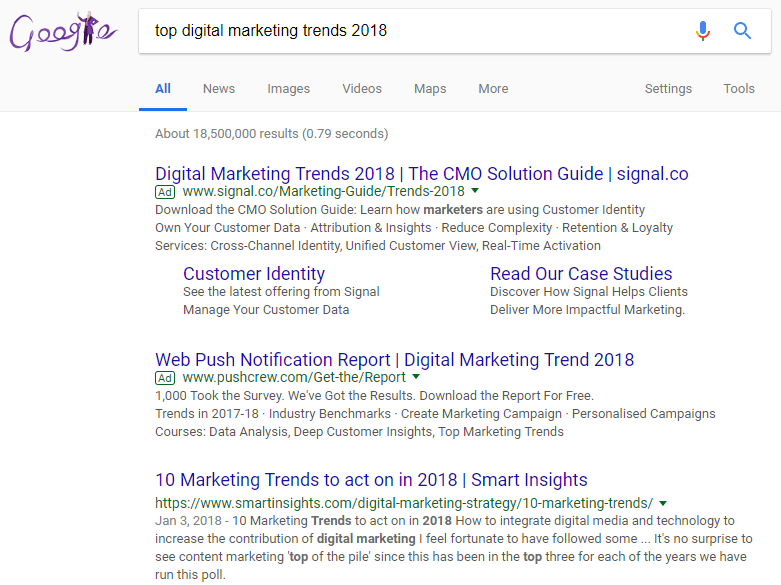
Advertisers who utilize search advertising show their ads to users who are actively searching for specific keywords, and they pay a fee every time someone click the ad. This type of PPC advertising is especially effective because people who conduct searches tend to reveal a lot about their intent with their search query.
What are search engine ads?
On Bing and Yahoo, search engine ads typically appear above, below, or next to the organic search results. That is one key difference between Google and other search engines because Google only shows ads above and below search results. Regardless, search ads include the following key elements:
- A headline, which should incorporate relevant, attention-grabbing keywords because it’s the largest and most noticeable ad component.
- Display URL, comprised of your final URL domain, optional subdomain, and path fields, to provide searchers an idea of where they’ll be taken once they click through (hopefully to your landing page). On Google, Bing, and Yahoo, display URLs are green, directly underneath the headline. On Bing, they’re also bold:

- Description text to highlight the most important details about your product or service, and persuade users why they should click through.
- Ad extensions, like the ones in the Yahoo ad below, enable your ad to take up more space in the results list, increasing its visibility and allowing you to provide more information about your product or service:
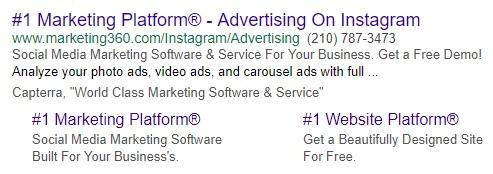
To earn the coveted click, each component should work together and use a strong landing page, highlighted by a landing page.
How does search engine advertising work?
Search engine advertising operates using an auction-based system, in which advertisers bid on certain keywords relevant to their product or service. It should be mentioned, however, that bids and clicks are different. Just because you might bid $100 for a keyword phrase, does not mean you will be charged $100 for each ad click.
Keyword selection determines which searches display your ads, so without in-depth keyword research to identify the most appropriate terms, you could potentially miss your target audience. Choosing the right keywords (ones with high volume and low competition) can also make your ad rank higher and cost less.
While a competitive CPC bid and highly-targeted keywords are important, your Quality Score also plays a significant role in your SERP ranking:
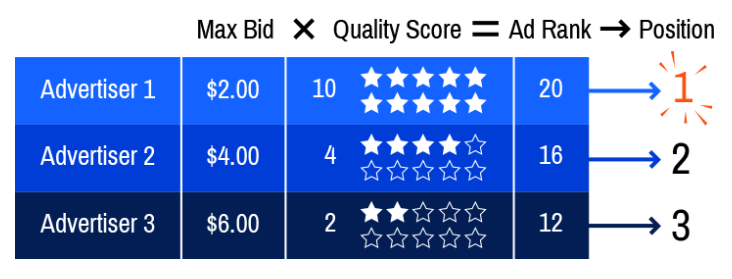
Quality Score indicates how well your ad meets the needs and search intent of your target audience, search engine uses it to provide searchers with the most useful results possible. To calculate Quality Score, SEM platforms look at a variety of factors:
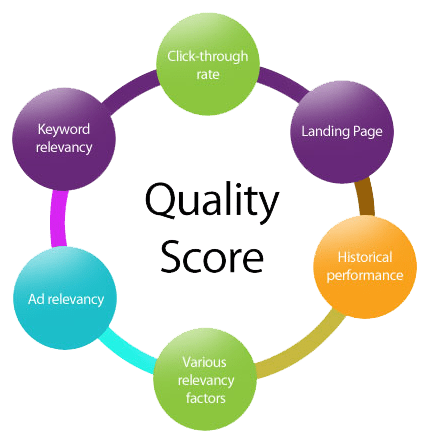
The benefits of having a detailed strategy
1. Quick and easy implementation
Setting up a search advertising campaign is relatively fast and easy. It’s highly flexible and configurable, and can typically be set up in just a few hours. Additionally, changes can be made on an ad hoc basis, so you can continuously tailor your website content, keywords, and ad spending based on your audience’s behavior.
You can also import your existing Google Ads campaigns directly into Bing Ads, so with just a few clicks, your campaign is up and running without having to recreate everything from scratch:
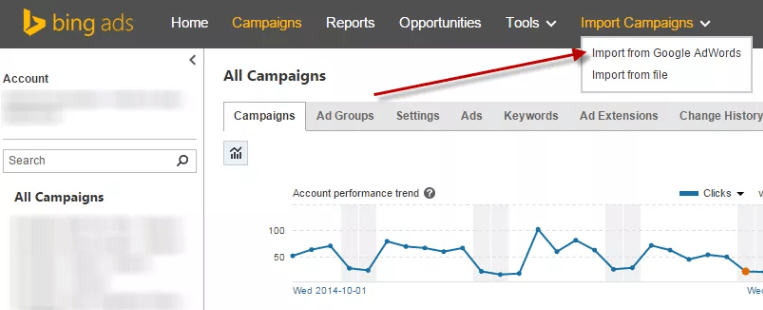
2. High user intent
Since search advertising is based on keyword-focused search queries, it offers highly targeted ads to search users. People are telling you what they like — so you’re reaching an appropriate audience. In fact, one survey indicates that 90% of searchers know exactly what they’re looking for, which is a good sign when you want them to take action (purchase, download, sign up, etc.).
Also, since paid search ads are extremely targeted, they are considered much less intrusive than other ad types. By providing a better user experience for Internet users, they can, in turn, substantially increase conversion rates and ROI.
3. Fast results
There is limited real estate for top positions in organic search results. And reaching those coveted positions requires a lot of SEO work. Even if you manage to make it there, it takes extensive time and patience. However, by paying your way onto SERPs (even though space is limited here as well), it’s much faster and simpler to score a top position.
4. Greater brand awareness
Search engine advertising also helps raise brand awareness. The higher your ad ranks, the more it will be seen. As prospects become more familiar with you over time — recognizing you as a relevant and trustworthy company. Their search terms will become increasingly related to your product, service, or brand. Plus, when people click-through to your site, and you have a retargeting pixel in place, they will continue to see your brand name and value proposition on display ads.
5. In-depth measurability and analysis
Search engines like Google, Yahoo, and Bing provide advertisers with real-time data. And paid search analytics so that campaign performance can be easily tracked and measured. Tracking useful, in-depth information, such as:
- Money spent vs. value generated
- Total impressions
- CTR
- CPC
- Average ad position
- Conversion rate
- Cost-per-conversion
- Prospects’ geographical location
- What type of device they’re using
- Average time on page
- What pages they visited on your site
Search engine advertising statistics
Whether you’re planning to adopt a search advertising strategy, or already have one that needs improving, some interesting statistics to consider:
- In 2016, digital search advertising spending in the U.S. was at $29.24 billion. In just the first half of 2017 alone, it reached $19.1 billion. By 2019, it’s projected to reach $40.6 billion.
- Today, search advertising spend accounts for nearly half of total digital ad spend.
- As of January 2018, Google generated 63.4% of all U.S. search queries, making it the continued market leader; Microsoft Sites (including Bing) own 23.7% market share; and Oath (formerly known as Yahoo) has an 11.9% search market share:
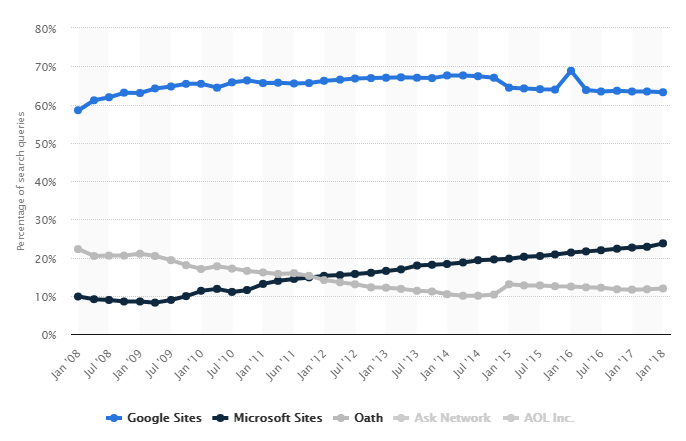
- The average cost per action (CPA) in a Google Ads search campaign is $59.18.
- The most expensive keyword phrase on Google Ads is “best mesothelioma lawyer” at $935.71 per click.
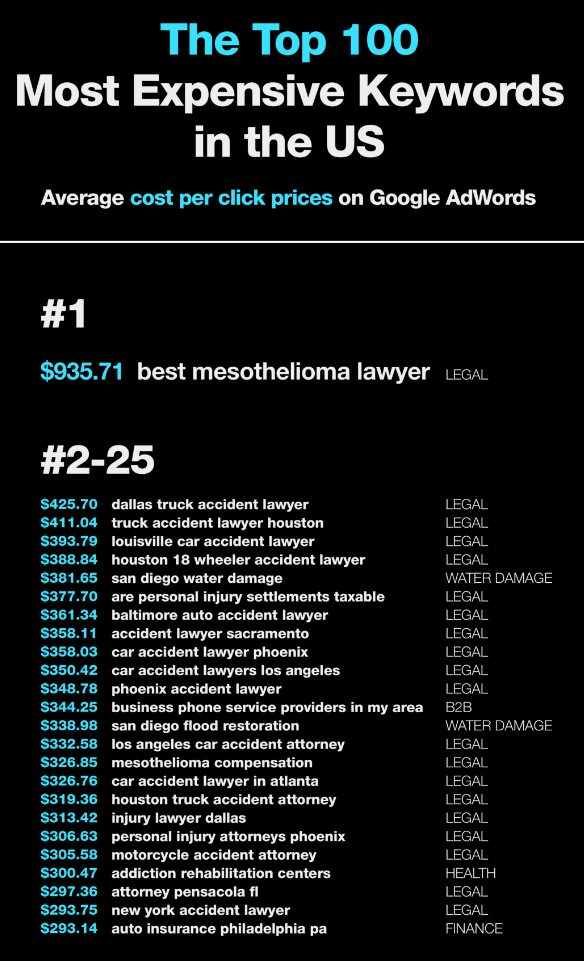
2 major search engine advertising major trends
1. Enhanced audience targeting
Many experienced advertisers predict that a detailed keyword strategy is no longer enough. Rather, the most successful search advertising strategy will include intensified audience targeting as well. This means highly customized messages, an improved and personalized user experience, and better monetization strategies.
While keywords will remain the foundation, a highly segmented audience will be what drives change and separates the good campaigns from the great, highly profitable campaigns.
2. Voice search continues to grow
With the growing popularity of voice search — aided by smart speakers — full sentences have been brought to both search queries and responses from search engines. While advertisers may not build entire paid ad campaigns around voice search. They should certainly acknowledge how search behaviors change with voice search: via voice (e.g., Google Home, Amazon Echo) or via screen (e.g., Siri, Cortana, Google Assistant).
What will shape advertising with voice search and smart speakers remains to be seen, but two common predictions include more partnerships and longer-tail keywords.
Get ahead of every organic result
Since search engine advertising puts you directly in front of users who are actively searching for what you offer. There is no denying that a detailed strategy can help you get ahead of organic results. When done right, internet search advertising is a great way to increase brand awareness, generate leads, drive online sales, and gain new customers. Of course, this can only happen when paired with an optimized landing page.
Fully stacked with a designer-friendly builder, team collaboration, Instablocks™, advanced analytics, and more, the Instapage optimization platform empowers digital advertisers to create the most effective experience. No other platform compares. Sign up for an Instapage 14-day free trial today.

Try the world's most advanced landing page platform with a risk-free trial.
